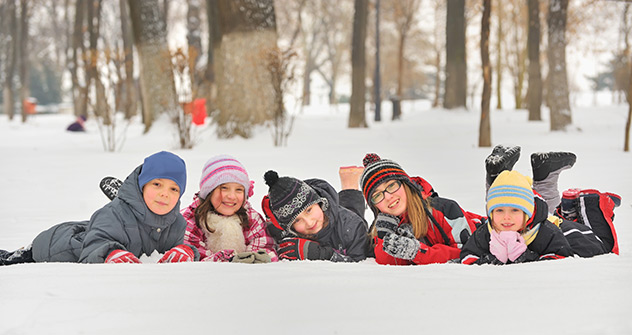Cold Weather Newsletter

It’s COLD Out There!
It seems that winter has really established itself firmly in our area! After a relatively mild fall and early winter, it’s gotten seriously cold and children are especially vulnerable to getting “too cold”! What’s too cold? Another way of putting it is “hypothermia” or “frostbite”. Our young children depend on their parents and caregivers to dress them appropriately for the cold. Teens need to be reminded of how to dress – even if it’s not always the most stylish!
Exposed skin is most at risk – so every inch needs to be covered as much as possible. Layers work best – they can be removed one at a time if a child gets too warm. A good rule of thumb is to have young children wear one more layer than an adult would when going out in the cold to play. Long underwear is great – but if it’s not available, snug fitting leggings/tights or even pajama pants as a first layer work well. Then layer on long pants or sweatpants, and a long sleeved shirt. Finally, warm socks, weatherproof outerwear and boots. Don’t forget a hat and gloves!
Here are some signs to look for that suggest hypothermia:
Constant shivering, tiredness out of proportion to the activity, cold, pale skin and rapid breathing (again – out of proportion to the activity). If you ignore these symptoms, hypothermia can progress to confusion, loss of judgment and coordination, drowsiness and slurred speech, and abnormally slow breathing.
If you notice any signs of hypothermia – bring your child indoors immediately and get them as warm as possible. If things don’t improve rapidly, call 911.
Now a little about frostbite:
Frostbite is when skin and the tissue below it freezes. It usually occurs on exposed skin, especially fingers, toes, ears and the nose. The skin first starts to feel numb or to hurt. It may look white or even grey. Please watch your kids – they often ignore symptoms if they are having too much fun!
If you suspect frostbite, bring your child indoors and take off any wet garments. Put the frostbitten part in barely warm (NOT hot) water, or place a warm washcloth on the nose or ears. Keep the rest of the child’s body warm – a warm drink helps too! The frostbitten parts often hurt for a few minutes as they warm up, but feel better quickly. If things aren’t improving – call us for further advice.
We can all really have a lot of fun out in the cold and snow – just dress accordingly so no one ends up uncomfortable or sick!
(The above information adapted from a newsletter from The Children’s Hospital of Philadelphia)